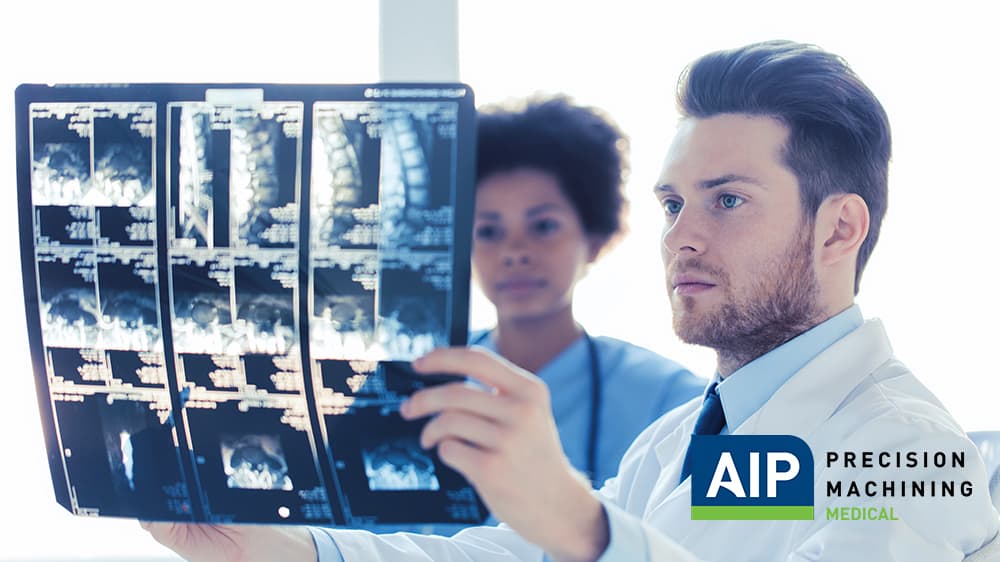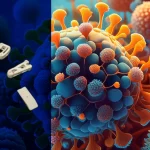Why PEEK Plastic Material Biocompatibility Is the Standard in Orthopedic Surgery
Medical-grade Polyetheretherketone (PEEK) is a radiolucent high-performance polymer alternative to metallic biomaterials. It comes in different versions ranging from unfilled grades with varying molecular weight, to those with image-contrast and carbon fiber-reinforcement grades for demanding medical treatments inside the body or in the operating room. Carbon-reinforced PEEK is similar in strength to cortical bone, making it an attractive biomaterial for spinal fusion surgery, and reduce stress shielding.
In orthopedics, PEEK has been used for intervertebral cages, posterior & anterior instrumentation, and standard lumbar fusion. Additionally, clinical studies of PEEK for cervical fusion have revealed its advantages over titanium or cadaver bone.
As this material continues to gain traction in the orthopedic industry, it has shown superior qualities over stainless steel and titanium for biocompatibility, radiolucency, and durability.
A Brief History of PEEK in Orthopedic Surgery
Since the 1980s, Polyaryletherketones (PEEK) have been utilized as biomaterials in trauma, orthopedic, and spinal implants. Due to its relative inertness, radiolucency and chemical resistance, PEEK has had the greatest clinical impact in spine implant design.
Laboratory studies during the 1990s confirmed that PEEK implants had the needed combination of wear, strength, creep, and fatigue resistance to replace the metallic biomaterials in spinal implants. An intervertebral fusion cage was the first piece of spinal instrumentation that had been made with PEEK rather than metal. It was implanted in 1999 and made with PEEK-OPTIMA™ from Invibio Biomaterial Solutions.
The Future of PEEK Beyond Spinal Implants
 Since then, PEEK has only expanded as a performance biomaterial for instrumented spine surgery. In the United States, spine fusion is one of the leading surgeries for patients who suffer from chronic neck and back pain that does not respond to preliminary treatments.
Since then, PEEK has only expanded as a performance biomaterial for instrumented spine surgery. In the United States, spine fusion is one of the leading surgeries for patients who suffer from chronic neck and back pain that does not respond to preliminary treatments.
According to Orthopedic Design & Technology, around 215,000 Americans underwent spine fusion procedures in 1997. By 2007 that number had increased to 402,000. PEEK is now an established biomaterial that will only continue to expand.
The Biocompatibility and Biostability of PEEK
PEEK displays excellent biocompatibility and biostability as a performance medical-grade material. To differentiate, let’s briefly discuss biocompatibility versus biostability.
Biocompatibility – The biological requirements of a biomaterial or biomaterials used in a medical device. When it comes into contact with human tissue and fluids, it’s compatible with the environment and will not incur adverse effects.
Biostability – The ability of a material to maintain its physical and chemical integrity after implantation into living tissue. The FDA mandates that any medical material that comes into direct or indirect contact with human tissue and fluids must maintain mechanical and molecular integrity.
Anything touching or interacting with human tissue and bone must be both biocompatible and biostable for a patient. This is one area where metals fail compared to PEEK. Metals like titanium are a standard material for spinal fusion, yet clinical studies continue to reveal the advantages of PEEK.
Benefits of PEEK for Spinal Fusion
PEEK has a growing advocacy in the field of orthopedics for cervical fusion as well as spinal fusion. Published literature supports the material’s advantages and highlights these key benefits for patients with spinal and cervical fusion surgery:
- • Improved spinal alignment and geometry
- • Reduced hospital stays and decreased blood loss
- • Decreased complication rates
- • Good/excellent functional outcomes and improved patient satisfaction
- • Excellent fusion rates
Biomaterial Comparison: PEEK Versus Metals
When it comes to standards of medical biomaterials, PEEK tends to outshine metals such as stainless steel and even titanium alloy.
Stainless Steel
Stainless steel has the advantage of being inexpensive, durable, and easily alloyed. However, as medical practices have advanced, stainless steel is often replaced by titanium and PEEK implants for spinal fusions.
First, stainless steel has low biocompatibility and is more likely to leech artifacts due to corrosion once implanted. This is a danger to patient safety and increases the need for surgeries overtime. PEEK, on the other hand, closely resembles cortical bone tissue and is flexible enough to graft onto tissue.
Additionally, metals like stainless steel visually obscure the healing site under fluoroscopy, making it more difficult for doctors to see whether the spine is healing correctly when doing checkups via X-rays or MRIs. Conversely, PEEK is a radiolucent material that offers ease, comfort, and a clear view to monitor stability and healing.
Titanium Alloy
Titanium alloy is an accepted standard biomaterial for spinal and cervical fusion surgeries. Compared to PEEK, it has a similar rate of fusion for cervical and lumbar spine fusions.
One potential complication of spinal fusion is the subsidence of disc height in the post-operative period. Recent studies to assess subsidence in titanium and PEEK cages showed a notably increased rate of subsidence in titanium versus PEEK in patient follow-ups.
This is a serious concern for surgeons looking to improve the rate of patient recovery and lessen repeat spinal fusion surgery. In this regard, PEEK is a superior performance material for safer and better spinal fusion practices.
Advancing Orthopedic Innovation With Medical-grade PEEK
 The fields of orthopedics and spinal fusion continue to research new methods for best practices in the industry. Over the last three decades, medical-grade PEEK has established itself as the performance biomaterial of choice for surgeons and OEMs. Medical device design demands the highest level of sanitation, biocompatibility, and precision in one of the most extreme environments, the human body.
The fields of orthopedics and spinal fusion continue to research new methods for best practices in the industry. Over the last three decades, medical-grade PEEK has established itself as the performance biomaterial of choice for surgeons and OEMs. Medical device design demands the highest level of sanitation, biocompatibility, and precision in one of the most extreme environments, the human body.
As a material that closely resembles cortical bone, PEEK has an established advantage over other metals such as titanium that have shown degradation and leeching over time. As OEMs search to expand the horizon of orthopedic medicine, PEEK polymer machinists like AIP stand at the ready to provide unrivaled expertise on design, function, and quick prototyping.
Talk to a team member from AIP about your next medical grade PEEK project.







